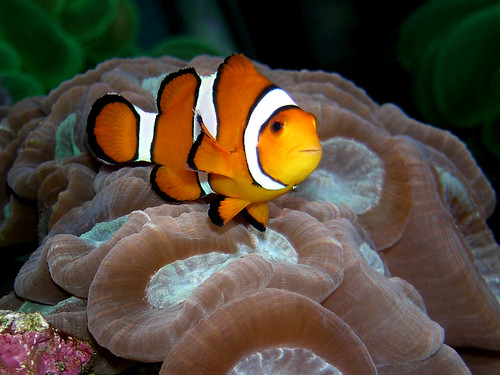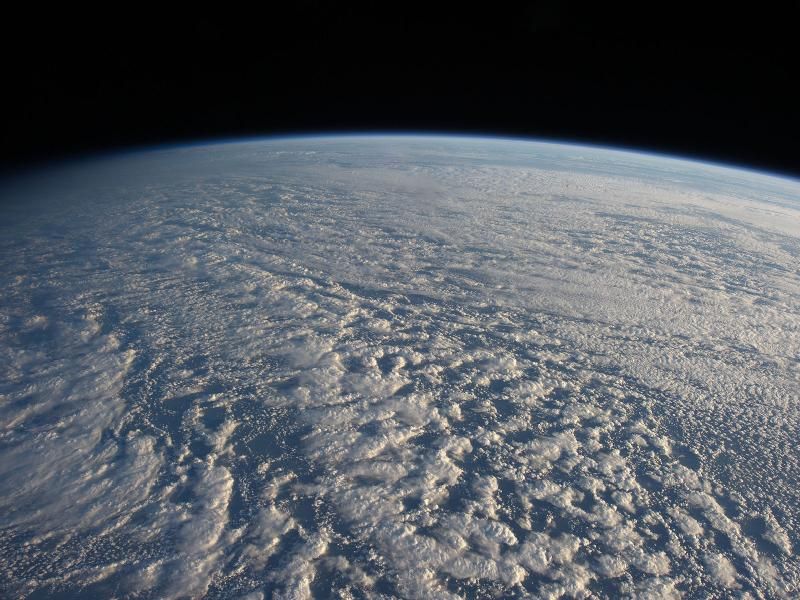Monday is here one more time and the opportunity for science talk is here once again. Time to brighten your day with selections from science sites across the globe. New discoveries, new takes on old knowledge, and other bits of news are all available for the perusing in today's information world. Today's tidbits include a new report says climate change to profoundly affect the US Midwest, severe climate is jeopardizing the Amazon forest, the effect of crocodile snout shape on feeding habits, and black silicon can take efficiency of solar cells to new levels.
Pull up that comfy chair and grab a spot near the fire. There is always plenty of room for everyone. Another session of Dr. Possum's science education, entertainment, and potluck discussion is set to begin.
Featured Stories
As the effects of climate change continue to be observed and to be studied a new report says the US Midwest is to be profoundly affected.
Climate change will lead to more frequent and more intense Midwest heat waves while degrading air and water quality and threatening public health. Intense rainstorms and floods will become more common, and existing risks to the Great Lakes will be exacerbated.
Those are some of the conclusions contained in the Midwest chapter of a draft report released last week by the federal government that assesses the key impacts of climate change on every region in the country and analyzes its likely effects on human health, water, energy, transportation, agriculture, forests, ecosystems and biodiversity.
The effects of a megadrought that began in 2005 continue to cause trouble in the
Amazon forest.
he scientists found that during the summer of 2005, more than 270,000 square miles (700,000 square kilometers, or 70 million hectares) of pristine, old-growth forest in southwestern Amazonia experienced an extensive, severe drought. This megadrought caused widespread changes to the forest canopy that were detectable by satellite. The changes suggest dieback of branches and tree falls, especially among the older, larger, more vulnerable canopy trees that blanket the forest.
While rainfall levels gradually recovered in subsequent years, the damage to the forest canopy persisted all the way to the next major drought, which began in 2010. About half the forest affected by the 2005 drought - an area the size of California - did not recover by the time QuikScat stopped gathering global data in November 2009 and before the start of a more extensive drought in 2010.
Among the most feared of predators is the
crocodile with its elongated snout.
...a team of researchers compared the jaw strength of different types of crocodiles when feeding on large prey. Using computer technology they subjected the jaws to the sorts of biting, shaking, and twisting loads that crocodiles use to feed on large prey. The team generated 3D images showing the strain measured on the jaws of seven diverse species of crocodile.
They found the lower jaws of short-snouted crocodiles performed well under the loads applied to mimic the feeding behaviour on large prey, but those with elongated jaws were more likely to break under the same loads, showing their limited ability to feed on large prey.
Applying an atomic layer allows more surface passification and increased efficience of
black silicon in applications where sensitivity is important.
More effective surface passivation methods than those used in the past have been needed to make black silicon a viable material for commercial applications. Good surface passivation is crucial in photonic applications such as solar cells. So far, the poor charge carrier transport properties attributed to nanostructured surfaces have been more detrimental for the final device operation than the gain obtained from the reduced reflectance.
Black silicon (b-Si) can also be used in other technologies than solar cells. Numerous applications suggested for b-Si include drug analysis.
Knucklehead's Photo of the Week
Ocellaris on Candy Cane/Trumpet coral

©Knucklehead, all rights reserved, presented by permission. (Click on the image to see more in the same series.)
Other Worthy Stories of the Week
Space paraphernalia in pictures
Best microscope videos of 2012
Neon lights up exploding stars
The worst science mistakes, missteps, and misdeeds of 2012
Light from the darkness of Lupus 3
Landsat senses a disturbance in the forest
New surfaces repel most known liquids
New sunspots producing space weather
Black carbon larger cause of climate change than previously assessed
Thin film solar cells: A new world record for solar cell efficiency
New material for warm-white LED lights
Unrestricted access to the details of deadly volcanic eruptions
4000-year-old Shaman's stones discovered
Spring flowers bloom as much as a month early keeping pace with climate warming in the eastern U.S.
Robofish glides with the greatest of ease
For even more science news:
General Science Collectors:
Alpha-Galileo
BBC News Science and Environment
Eureka Science News
LiveScience
New Scientist
PhysOrg.com
SciDev.net
Science/AAAS
Science Alert
Science Centric
Science Daily
Scientific American
Space Daily
Blogs:
Cantauri Dreams space exploration
Coctail Party Physics Physics with a twist.
Deep Sea News marine biology
List of Geoscience Blogs
Science20.com
ScienceBlogs
Space Review
Science Insider
Scientific Blogging.
Space.com
Techonology Review
Tetrapod Zoology vertebrate paleontology
Wired News
Science RSS Feed: Medworm
The Skeptics Guide to the Universe--a combination of hard science and debunking crap
At Daily Kos:
This Week in Science by DarkSyde
Overnight News Digest:Science Saturday by Neon Vincent. OND tech Thursday by rfall.
All diaries with the DK GreenRoots Tag.
Astro Kos
SciTech at Dkos.
NASA picture of the day. For more see the NASA image gallery or the Astronomy Picture of the Day Archive

Stratocumulus Clouds Over the Pacific, NASA, Public Domain


